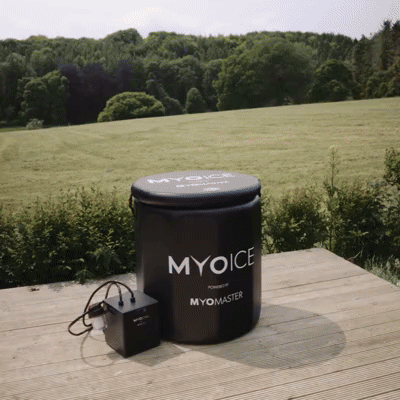Cold Water Exposure: Recovery Protocol Basics For Performance
Cold water exposure or ice baths, have long been a staple in athletes’ recovery protocols and, more recently, people like Wim Hof have introduced the cold water exposure to the masses by championing the mental benefits it offers.
However, as the practice becomes ever more popular there is still a lot of misconception out there as to how to properly use ice baths to aid recovery and improve athletic performance. So we’ve looked at a meta analysis of 52 individual studies of cold water exposure to bring you the cold hard facts on this recovery protocol.
What are the performance benefits of cold water exposure?
There are a few key physical benefits to cold water exposure…
The first is increasing metabolism and transforming white fat cells into brown fat cells. Regular ice baths help create more brown fat cells that are thermogenic, meaning it can increase the body’s core temperature. These type of fat cells are much more desirable than the white variants as they help keep the body lean and can act almost like a reservoir of heat when your body requires it.
The second is reducing inflammation, both in the muscle and the connective tissues. This happens due to a reduction in inflammatory cytokines such as IL-6, interleukin six as well as an increase in anti-inflammatory cytokines such as interleukin 10. Reducing inflammation post intense workout is critical for reducing the feeling of muscle soreness and allow you to get back to training faster.
The third is a reduction of serum creatine kinase in the blood post workout. Serum creatine kinase is an enzyme that is found in your skeletal muscle, heart muscle and brain. Post workout we have higher levels of it in our blood as a result of cells damaged by intense exercise breaking down and leaking this enzyme into our bloodstream. Cold water stops this breakdown process leaving more cells intact.
Are there any types of training that don’t benefit from cold water exposure?
In short, yes. Cold water exposure actually limits the effects of muscular hypertrophy. So if your goal is to put on muscle and gain overall mass, taking an ice bath directly after training will limit that outcome. However, the resulting inflammation from heavy lifting occurs hours after the training stimulus so taking an ice bath the day after a big gym session will still be beneficial in the long run.
What temperature should the water be for an ice bath and how long should I stay in it?
There have been some peer reviewed studies into the frequency and time duration of cold exposure for physical benefits that have identified a rough total of 11 minutes per week, split into daily sessions of 2-4 minutes as being optimally beneficial for physical performance, specifically to improve metabolism.
This is a very generalised approach to the protocol and it’s essential that you listen to your body when engaging in ice baths. Some people have a higher willpower than others when it comes to overcoming cold water exposure – so do not be put off if you can only manage a minute to begin with, like all training you will improve over time.
When it comes to the water temperature, unfortunately, there is no hard and fast rule for what temperature the water should be to get the maximal performance benefits, it all depends on your cold tolerance, your internal core temperature and a few other factors.
There is a general guideline though to ensure you’re doing the protocol safely and as close to optimal as possible without the assistance of sports scientists.
The temperature of the water should be uncomfortably cold – when you first enter the water it should feel like “Arrrghh I need to get out” but that you can stay in safely without giving yourself hypothermia. It’s important to remember that at the start of the day your core temperature is lower than at the end of the day – meaning your tolerance to the cold will be lower in the morning than it is in the evening.
Hopefully this has given you some insight into the world of cold water exposure and you can now build it into your recovery routine confidently.







